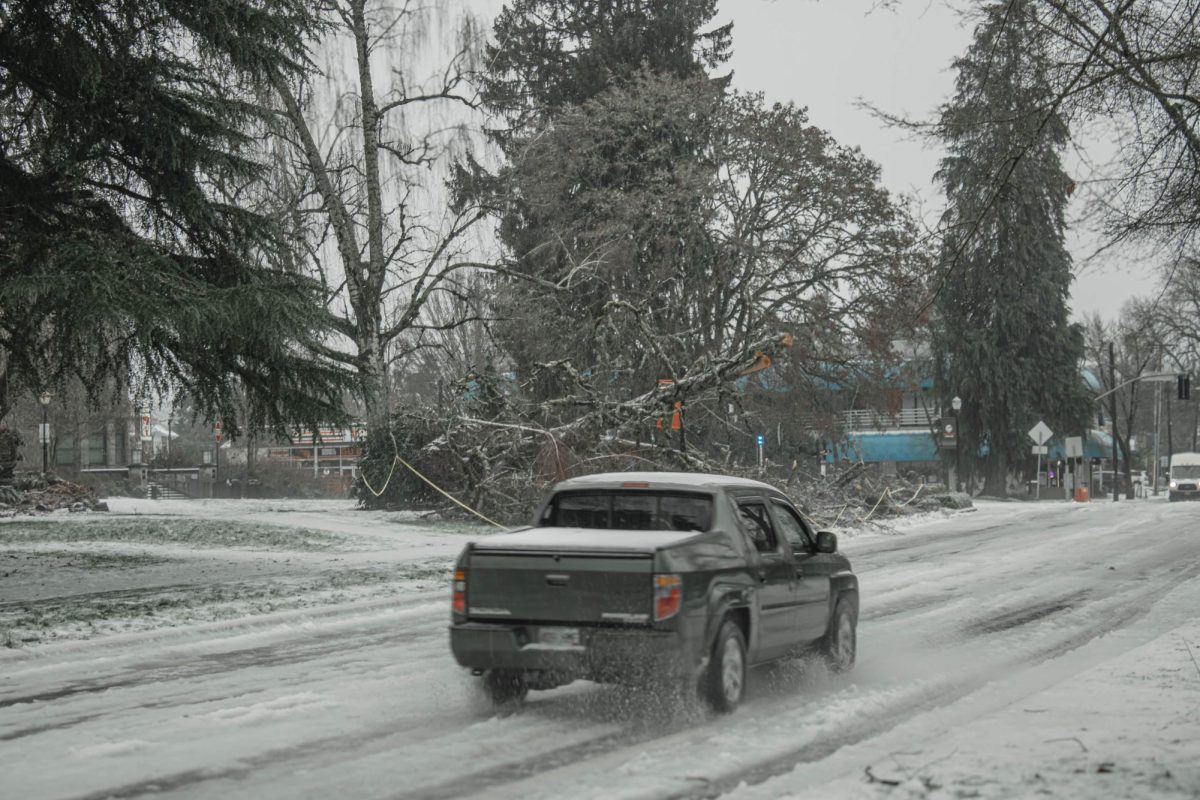At 3:30 a.m. on Jan. 18, while Corvallis was sleeping under a sheet of ice, Mike Bamberger was compiling the latest weather reports.
An hour later, Bamberger, OSU’s emergency manager, was presenting his findings to the group responsible for deciding whether to close the OSU Corvallis campus.
Extreme weather can happen any time, and when it does the decision to close campus is made by multiple OSU departments, considering everything from downed trees to impacts to education.
Representatives from seven departments are involved in the decision, including Finance and Administration, University Human Resources, the Office of the Dean of Students and Public Safety. According to Bamberger, OSU Vice President for Finance and Administration Mike Green is in charge of the decision, using input from all representatives to reach a consensus agreement, and if one cannot be reached, making the final call.
“The biggest challenge (in this snowstorm was) balancing the safety of the students and employees with a need to get back to school and research,” Bamberger said, which resulted in delayed starts before campus was fully closed.
Bamberger emphasized that the team strives to reach decisions about campus closures a day in advance, but during rapidly changing conditions, like those that led to the recent closure, they may need to meet multiple times.
In these cases, the response team meets late in the evenings and in the early hours of the morning before UHDS and ROTC staff are expected on campus.
Shanon Anderson, the associate vice president for Public Safety and chief of police, said that besides other OSU departments, she maintains contact with the police chief for Corvallis and the Benton County sheriff to ensure that the university aligns its decisions with the rest of the Corvallis community.
“It is important as good community members to be considerate of the strain on available local emergency resources during these significant weather events,” Anderson said.
Bamberger added that the team also communicates with power companies, local K-12 schools and transportation systems to account for students and faculty who can not reach campus due to power outages, unexpected childcare or a lack of transportation.
In the end, Bamberger and Anderson said that ensuring the safety of students and staff is the top priority.













































































































